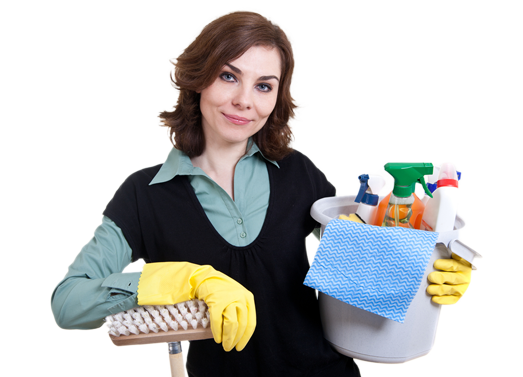Jewelry Revival: Essential Cleaning Techniques
Posted on 30/08/2025
Jewelry Revival: Essential Cleaning Techniques for Sparkling Pieces
Jewelry isn't just an accessory--it's a reflection of your style, an heirloom, and sometimes, an investment. Over time, even the most cherished jewelry can lose its shine owing to daily wear, exposure to elements, lotions, and dust. That's why understanding jewelry revival and knowing the essential cleaning techniques is crucial to keep your adornments as brilliant as the day you got them.
In this comprehensive guide, we'll walk you through jewelry revitalization, step-by-step cleaning methods for different materials, expert tips for home care, and mistakes to avoid. Whether you own delicate heirlooms or bold costume pieces, these techniques will help you revive and protect your jewelry collection effectively.

Why Reviving Your Jewelry Is Important?
Jewelry is susceptible to a variety of threats--sweat, dirt, skin oils, chemicals, and pollution; all can dull gemstones and cause metal tarnish. Regular and proper cleaning not only restores your jewelry's original luster, but it can also:
- Prolong the lifespan of your pieces
- Prevent costly repairs or replacements
- Maintain the sentimental and market value
- Reduce the risk of skin irritation from grime buildup
- Showcase the true beauty and color of gemstones
Common Signs Your Jewelry Needs Revitalization
- Tarnishing or discoloration on metals
- Loss of sparkle in gemstones or diamonds
- Sticky residue from perfume, lotion, or sweat
- Build-up of dirt in settings and chains
- Unpleasant odor especially in silver, leather, or pearl jewelry
Essential Jewelry Cleaning Techniques by Material
1. Cleaning Gold Jewelry
- Mild Soap Solution: Mix a few drops of gentle dish soap with lukewarm water. Soak your gold jewelry for 10-15 minutes.
- Brush Gently: Use a soft-bristled toothbrush to remove dirt, especially in crevices.
- Rinse & Dry: Rinse with clean water and pat thoroughly with a soft, lint-free cloth.
Tip: Avoid harsh chemicals and rough handling, which can scratch or dull gold surfaces.
2. Reviving Silver Jewelry
- Baking Soda Paste: Make a paste using baking soda and water. Rub gently with a soft cloth or sponge.
- Aluminum Foil Bath: Line a bowl with aluminum foil, add hot water and a tablespoon of baking soda. Immerse the silver piece for 2-5 minutes to remove tarnish.
- Buff to Shine: Rinse and dry, then buff with a microfiber or polish cloth.
Note: Avoid too-frequent use of baking soda, which may scratch soft silver.
3. Diamond & Gemstone Jewelry Care
- Soak and Swish: Use a gentle soap and water solution; soak for 20-30 minutes.
- Toothbrush Clean: Clean around the gemstone and under settings with a baby toothbrush.
- Rinse Thoroughly: Make sure all soap is removed to retain sparkle.
Important: Some gemstones like opals, pearls, and turquoise are porous and can be damaged by water or chemicals. Always use only a damp cloth for these stones!
4. Pearl Jewelry Restoration Techniques
- Soft Cloth Wipe: After wear, gently wipe each pearl with a clean, soft cloth to remove oils.
- Mild Soap Water: If necessary, very briefly wipe pearls with a damp cloth dipped in a mild soap solution, then dry immediately.
Remember: Never soak pearls or use detergents, as these can erode delicate nacre and silk thread.
5. Cleaning Platinum Jewelry
- Mild Cleanser: Use the same technique as for gold: a mild soap solution, soft brushing, rinse, and dry.
- Professional Polish: For minor surface scratches, a jeweler can restore the platinum's bright finish.
6. Costume and Fashion Jewelry Care
- No Soaking: Since many pieces are glued, not set, avoid immersion in water.
- Damp Cloth: Clean gently with a slightly damp cloth. For tight spots, use a cotton swab.
- Dry Promptly: Prevent water damage by wiping dry and storing separately.
Expert Advice: How Often Should You Clean Your Jewelry?
- Daily: Wipe down regularly worn items, like rings and earrings, after each use.
- Monthly: Give your favorite pieces a deeper clean every few weeks.
- Yearly: Schedule professional cleaning and inspection to ensure secure settings and catch early signs of wear.
The Best At-Home Jewelry Cleaning Solutions
1. Ammonia and Water Solution
- Mix one part ammonia with six parts water for gold and diamond jewelry (avoid on porous stones).
- Soak for one minute, brush gently, rinse, and dry.
Caution: Use only occasionally and never with organic or soft gemstones.
2. Professional Jewelry Cleaning Cloth
- Polish silver, gold, and gemstones easily with a specialized jewelry cleaning cloth.
- Keep one in your accessory drawer for weekly touch-ups and tarnish removal.
3. Ultrasonic Jewelry Cleaner
- These devices use high-frequency sound waves to remove dirt and grime from intricate and hard-to-reach spots.
- Only suitable for certain metals and stones (never use for pearls, opals, or fragile antique pieces).
Common Jewelry Cleaning Mistakes to Avoid
- Using toothpaste, baking soda, or abrasive cleaners on soft metals or stones--these can scratch and damage your jewelry.
- Soaking glued jewelry or pearls--water can dissolve adhesives and damage the piece.
- Ignoring secure settings--always check and tighten clasps and stones before cleaning.
- Mixing jewelry types during cleaning--metals can scratch each other and stones may get dislodged.
- Excessive use of ultrasonic cleaners--not suitable for all materials; always check the manufacturer's instructions.
How to Properly Store Revived Jewelry
- Use individual pouches or compartments to prevent scratching and tangling.
- Store away from direct sunlight, humidity, and chemicals.
- For silver jewelry, keep anti-tarnish strips or silica gel packs in your jewelry box.
- Hang necklaces and bracelets to keep chains untangled.
When to Seek Professional Jewelry Restoration
While home cleaning is vital, some situations require professional intervention:
- Antique or vintage jewelry with fragile settings
- Gems that are loose, cracked, or chipped
- Delicate, intricate filigree work
- Deep tarnish or long-neglected pieces
Professional jewelers can re-polish, re-plate, or repair your items, ensuring their beauty and integrity are preserved for generations.
Natural & Eco-Friendly Jewelry Cleaning Methods
1. Vinegar Solution (for Solid Gold & Gemstones)
- Soak in a solution of 1/2 cup white vinegar and 2 tablespoons baking soda for two to three hours.
- Rinse thoroughly and dry with a soft cloth.
2. Olive Oil & Lemon Juice (for Silver)
- Mix 1/2 cup lemon juice and 1 teaspoon olive oil, dip a cloth in the solution, and polish the silver.
- Buff with a clean cloth for luster.
Eco-friendly techniques offer a gentle alternative to chemicals and are safer for frequent home use.
DIY Jewelry Cleaning: Step-by-Step Process
- Gather Supplies: Soft brushes, microfiber cloths, small bowls, mild detergent, specialized polishes.
- Sort by Material: Separate your collection to prevent cross-damage.
- Soak or Wipe: Use the appropriate solution and method for each material.
- Brush Lightly: Pay extra attention to settings, chains, and behind stones.
- Rinse and Dry: Always use clean water and pat dry immediately to avoid water spots.
- Polish and Store: Use a polish cloth for finishing and return items to their designated storage.
Reviving Sentimental Jewelry: A Lasting Investment
The ultimate goal of jewelry revival is more than just cleaning; it's about maintaining memories, feelings, and history. Regular jewelry cleaning techniques will not only preserve the beauty and value of your collection, but also ensure that each piece you wear continues to reflect your unique story.
With these comprehensive at-home solutions and expert tips, you can confidently handle jewelry maintenance and achieve a brilliant, like-new sparkle for years to come. Remember: a little TLC goes a long way in the world of jewelry revival!

Frequently Asked Questions: Jewelry Cleaning & Revival
- How often should I clean my engagement or wedding ring?
Weekly light cleanings with a monthly deep clean are recommended for everyday rings. - Are ultrasonic cleaners safe for all jewelry?
No, avoid using them for pearls, opals, and antique or delicate jewelry. - Is it okay to wear jewelry while swimming or showering?
Remove jewelry to avoid exposure to chlorine, salt, soaps, and hard water which can damage metals and stones. - Can DIY cleaning damage my jewelry?
If you follow the correct materials guide and avoid abrasive chemicals, DIY cleaning is safe for most modern jewelry.
Conclusion: A Lasting Shine for Your Jewelry Collection
Jewelry revival doesn't require expensive equipment or professional services every time. With the right knowledge and essential cleaning techniques, you can safely restore, maintain, and showcase the true potential of every special piece.
Unlock the hidden brilliance, extend the life of your cherished adornments, and keep your jewelry looking radiant--because your treasures deserve a revival!




